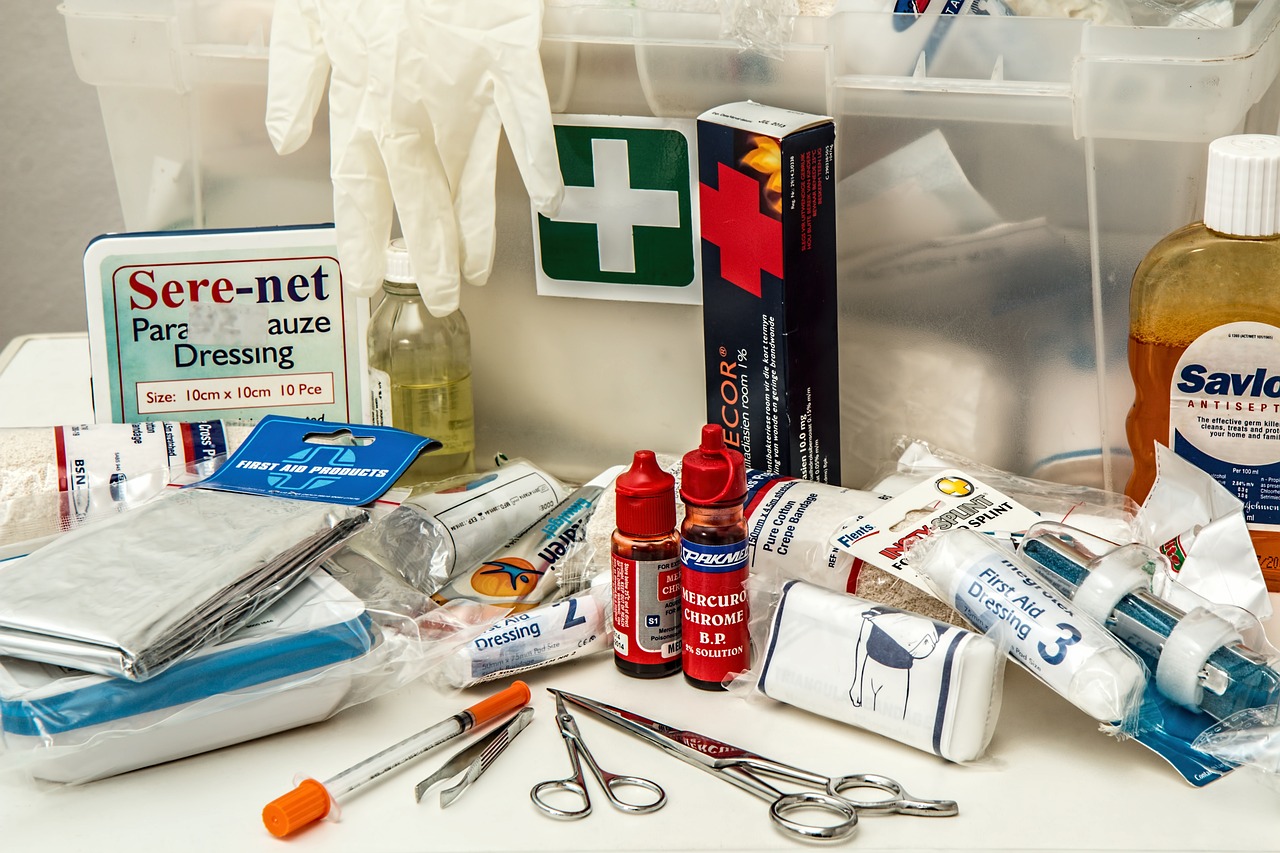Basic first aid knowledge is an invaluable skill that can make a significant difference in emergencies. By learning how to treat minor injuries like cuts, burns, and sprains, you can help yourself and others in times of need. This guide will walk you through the essential steps for dealing with these common injuries and how to create and maintain a basic first aid kit.
Treating Cuts and Scrapes
Steps to Follow:
- Wash Your Hands: Before treating any wound, wash your hands thoroughly with soap and water to prevent infection.
- Clean the Wound: Rinse the cut or scrape under cool running water to remove dirt and debris. If necessary, use mild soap around the area, but avoid getting soap directly in the wound.
- Stop the Bleeding: Apply gentle pressure with a clean cloth or sterile gauze until the bleeding stops. This usually takes a few minutes.
- Apply an Antiseptic: Once the bleeding has stopped, apply an antiseptic cream or ointment to prevent infection.
- Cover the Wound: Use a sterile bandage or adhesive bandage to cover the wound. This helps keep it clean and protected.
- Monitor the Wound: Keep an eye on the wound for signs of infection, such as redness, swelling, or pus. Change the bandage daily or whenever it becomes wet or dirty.
When to Seek Medical Help:
- If the cut is deep, won’t stop bleeding, or exposes underlying tissues or bone.
- If the wound is caused by a dirty or rusty object and your tetanus shot is not up to date.
- If you notice signs of infection despite proper care.
Treating Burns
Steps to Follow:
- Cool the Burn: Immediately hold the burned area under cool (not cold) running water for at least 10 minutes. Alternatively, you can apply a cool, wet compress.
- Protect the Burn: Once cooled, cover the burn with a sterile, non-adhesive bandage or clean cloth. Avoid using ice, butter, or ointments as they can cause further damage.
- Relieve Pain: Over-the-counter pain relievers like ibuprofen or acetaminophen can help manage pain and reduce inflammation.
- Avoid Breaking Blisters: If blisters form, do not pop them. Blisters protect the underlying skin and breaking them increases the risk of infection.
When to Seek Medical Help:
- If the burn is larger than the size of your palm.
- If the burn is on the face, hands, feet, or over a major joint.
- If the burn appears deep, with white or charred skin.
- If there are signs of infection, such as increased pain, redness, swelling, or pus.
Treating Sprains
Steps to Follow:
- Rest: Avoid using the injured limb to prevent further damage.
- Ice: Apply an ice pack wrapped in a cloth to the injured area for 15-20 minutes every hour. Do not apply ice directly to the skin.
- Compression: Wrap the injured area with an elastic bandage to reduce swelling. Ensure the wrap is snug but not too tight, as it can cut off circulation.
- Elevation: Keep the injured limb elevated above heart level as much as possible to minimize swelling.
When to Seek Medical Help:
- If you cannot move or bear weight on the injured limb.
- If the pain is severe and does not improve with home treatment.
- If you notice significant swelling, bruising, or deformity.
Creating and Maintaining a Basic First Aid Kit
Essential Items for Your First Aid Kit:
- Adhesive bandages (various sizes)
- Sterile gauze pads and adhesive tape
- Antiseptic wipes and ointment
- Hydrocortisone cream (for itching and rashes)
- Pain relievers (ibuprofen or acetaminophen)
- Tweezers (for removing splinters)
- Scissors (for cutting bandages)
- Elastic bandage (for sprains)
- Instant cold packs
- Thermometer
- Disposable gloves (for protection)
- Face mask (in case of respiratory issues)
Maintaining Your First Aid Kit:
- Regular Checks: Inspect your kit every few months to ensure all items are in good condition and not expired.
- Replace Used Items: Replenish supplies immediately after use.
- Update Medications: Ensure any medications are up to date and replace them as needed.
Conclusion
Having basic first aid knowledge and a well-stocked first aid kit can make a significant difference in handling minor emergencies. By being prepared and knowing how to treat cuts, burns, and sprains, you can provide immediate care and potentially prevent more serious complications. Remember, when in doubt, always seek professional medical help.

